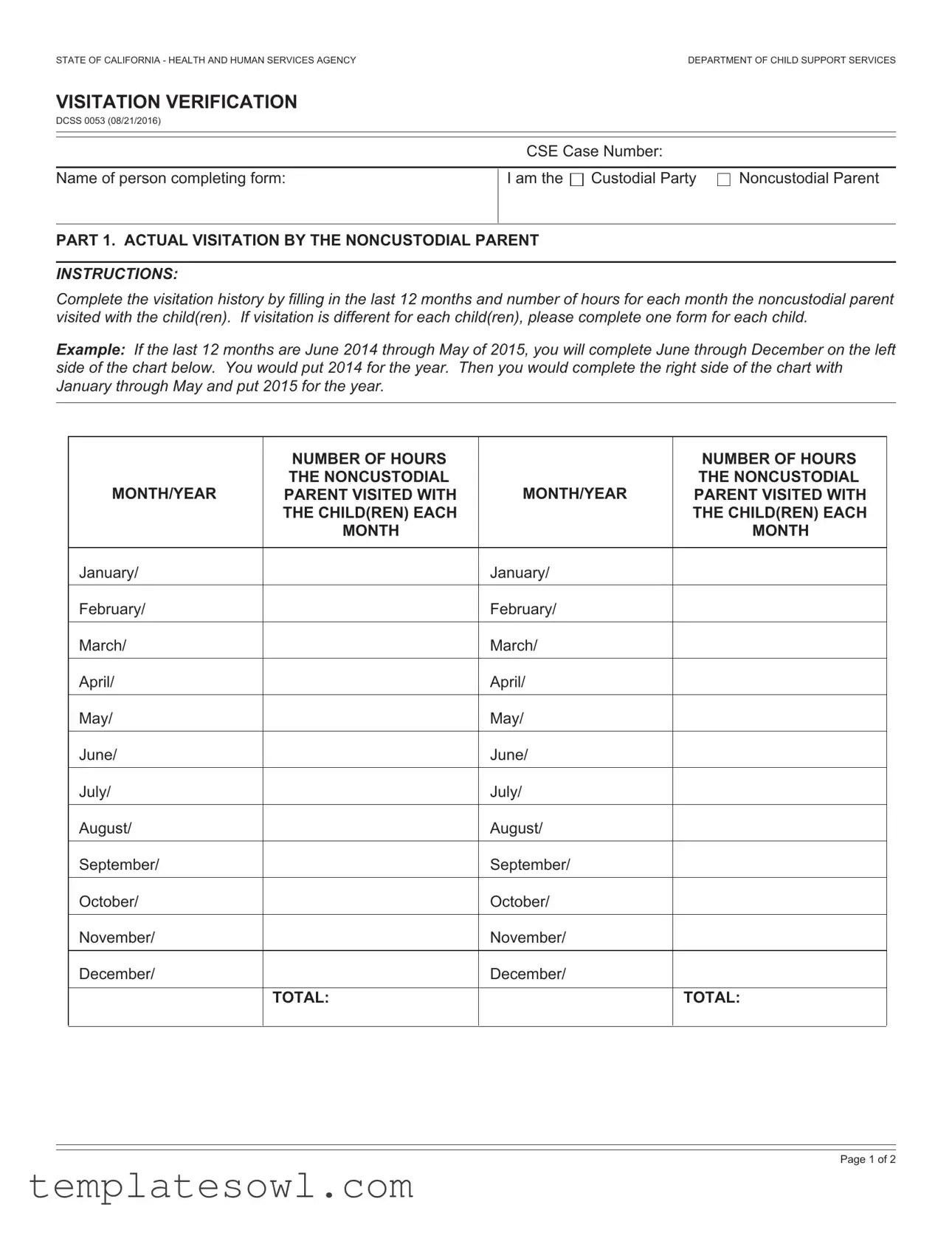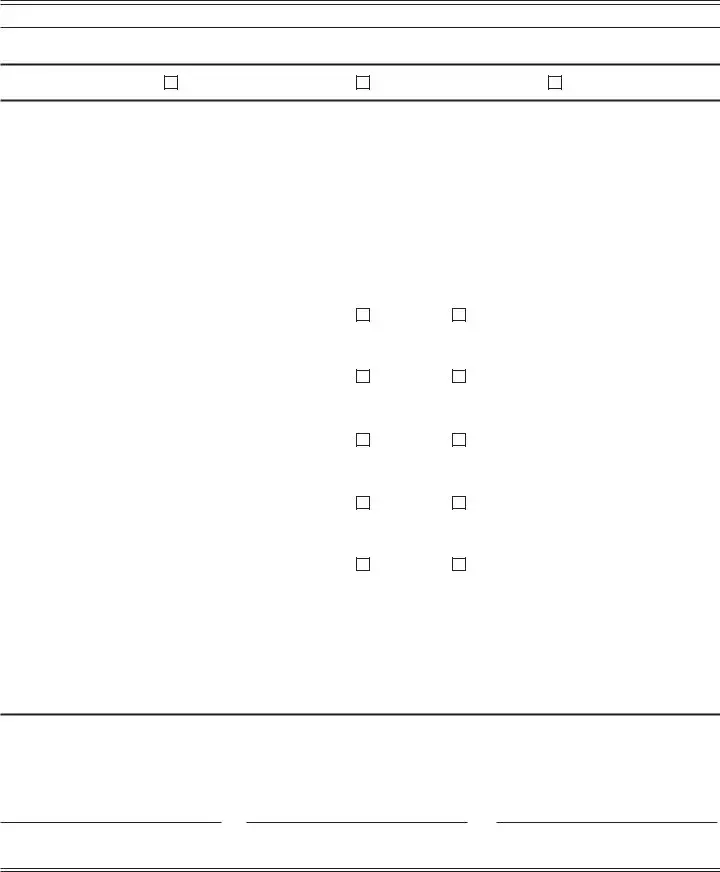What is the purpose of the DCSS 0053 form?
The DCSS 0053 form, also known as the Visitation Verification form, is designed to document and verify visitation schedules between a noncustodial parent and their child or children. Child Support Services may require this information to ensure compliance with visitation orders and to help facilitate a comprehensive understanding of the parenting arrangements. It provides a structured way to report the number of hours the noncustodial parent has spent with the child over the past year, which is vital for establishing a clear record of visitation practices.
Who should complete the DCSS 0053 form?
This form must be completed by the custodial party or the noncustodial parent, depending on the specific circumstances. If you are the person who primarily takes care of the child, you would be the custodial party. If your visitation rights are being documented, you would complete it as the noncustodial parent. It is important that the person filling out the form does so accurately to reflect the true nature of the visitation schedule.
How is the visitation history recorded on the form?
To record the visitation history, fill in the last twelve months in the designated chart provided in the form. For each month, specify the number of hours the noncustodial parent spent with the child or children. If visitation varies for different children, a separate DCSS 0053 form should be completed for each child. Be diligent in logging each visit accurately to ensure clarity and consistency in the official record.
What information is required regarding shared custody or visitation?
The form allows for the indication of whether shared custody exists or if it is solely visitation. You will need to check one of the options provided. Additionally, you should detail regular visitation hours, and if applicable, include information about vacation, summer, holiday, and overnight visitations. This section is important for ensuring that all aspects of the visitation arrangement are captured accurately, reflecting any nuances in the custody agreement.
Is there a declaration required on the DCSS 0053 form?
Yes, the form includes a declaration where the individual completing the document affirms that all information provided is true and correct to the best of their knowledge. This section serves as a pledge of honesty, indicating that the person understands the potential consequences of providing misleading information. It is essential to sign and date the form to affirm this declaration, as it may be shared with the other parent for verification purposes.


